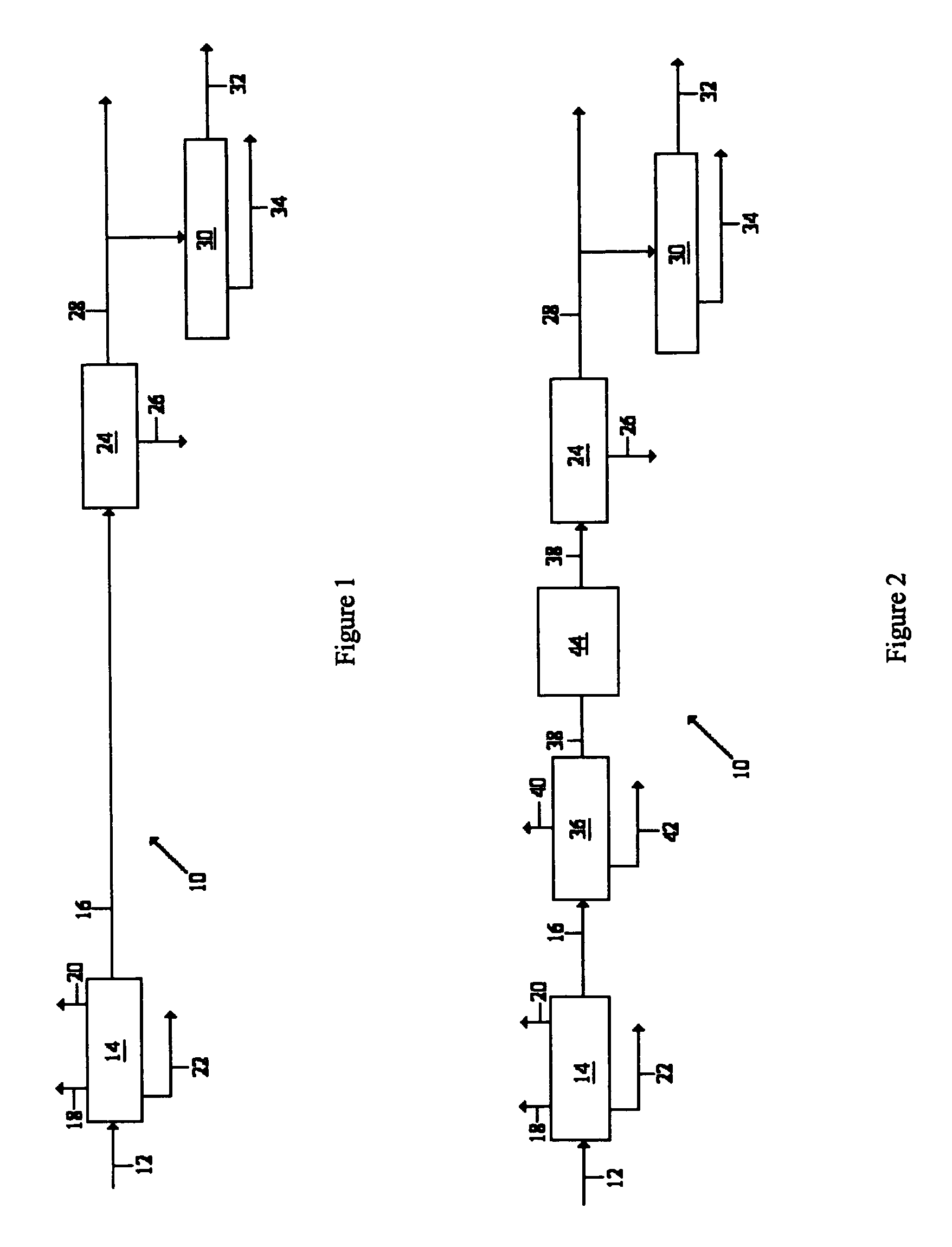Method of purifying fischer-tropsch derived water
a technology of fischer-tropsch and purification method, applied in the field of purification of water, can solve the problems of inability to directly apply or dispose of these waters, short supply of water, and relatively expensive commodity
- Summary
- Abstract
- Description
- Claims
- Application Information
AI Technical Summary
Benefits of technology
Problems solved by technology
Method used
Image
Examples
example 1
Treatment of Fischer-Tropsch Reaction Water Originating from an LTFT in Which a Cobalt Catalyst Was Used to Produce Purified Water
[0103]After separation of by-products, a continuous Fischer-Tropsch reaction water stream originating from an LTFT process was degassed at atmospheric pressure.
[0104]Free hydrocarbons in the reaction water were reduced to 0.005% (mass %) using a coalescer. The temperature of the reaction water was reduced to 37° C. using a plate heat exchanger. The composition of the reaction water is shown in Table 3 below.
[0105]Primary treatment of the reaction water was undertaken using a packed-bed down flow anaerobic digester. The reactor was operated at a HRT of 48–52 h and a COD loading rate of ca. 8–12 kg / m3.d. The pH of the reactor was maintained between pH 6.8–7.2 using caustic soda (NaOH).
[0106]
TABLE 3Typical Composition of LTFT Reaction Water Feed and Effluentfrom Anaerobic DigestionReaction water -Reaction water feed toeffluent from anaerobicanaerobic digesti...
PUM
| Property | Measurement | Unit |
|---|---|---|
| temperatures | aaaaa | aaaaa |
| temperatures | aaaaa | aaaaa |
| pH | aaaaa | aaaaa |
Abstract
Description
Claims
Application Information
 Login to View More
Login to View More - R&D
- Intellectual Property
- Life Sciences
- Materials
- Tech Scout
- Unparalleled Data Quality
- Higher Quality Content
- 60% Fewer Hallucinations
Browse by: Latest US Patents, China's latest patents, Technical Efficacy Thesaurus, Application Domain, Technology Topic, Popular Technical Reports.
© 2025 PatSnap. All rights reserved.Legal|Privacy policy|Modern Slavery Act Transparency Statement|Sitemap|About US| Contact US: help@patsnap.com


